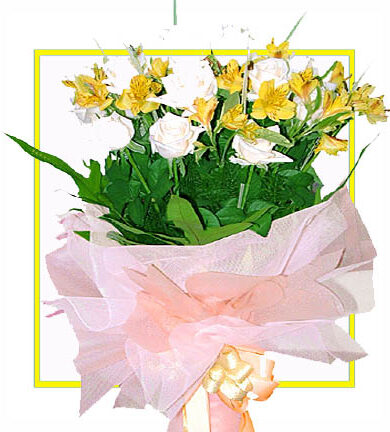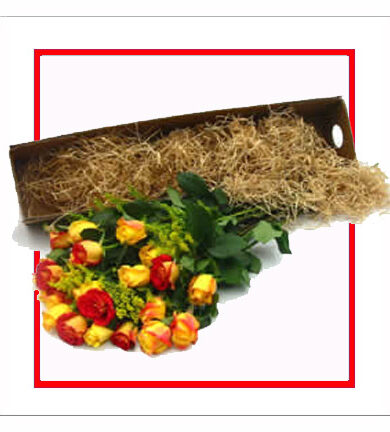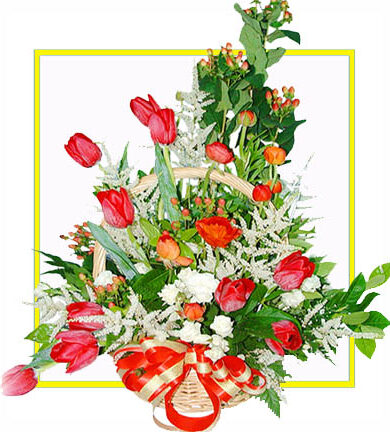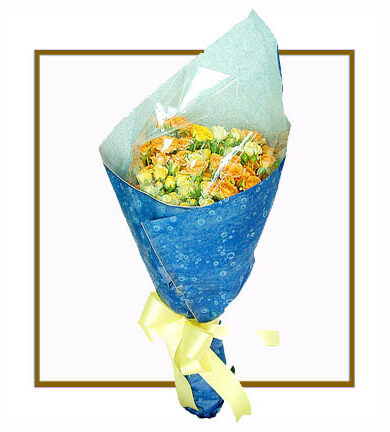Bareilly is an educational hub of western Uttar Pradesh, with multiple universities and research institutes. Bareilly is a seat of M. J. P. Rohilkhand University and hosts Indian Veterinary Research Institute and Central Avian Research Institute. (in Izzatnagar). The city hosts numerous Engineering Colleges (Institute of Engineering & Technology, A Govt Engineering College at M. J. P. Rohilkhand University Campus), Management Colleges, Law Colleges, Medical Colleges and other colleges run general courses. Bareilly College, located in the heart of city, is among the oldest educational institutions in India, built prior to the Revolt of 1857. It even has historical importance. |
In 1623 two Afghan brothers of the Barech tribe, Shah Alam and Husain Khan, settled in the region, bringing with them many other Pashtun settlers. With the immigration of Daud Khan, an Afghan slave (who originally hailed from Roh in Afghanistan), the Afghan Rohillas came into prominence. His adopted son Ali Muhammad Khan succeeded in carving out an estate for himself in the district with his headquarters in the region. He was ultimately made the lawful governor of Kateher by the Mughal emperor Aurangzeb Alamgir (ruled 1658–1707) and the region was henceforth called “the land of the Ruhelas.” After the end of the Mughal Empire many Pathans migrated from Rohilkhand. |
Santosh Gangwar is a prominent leader and former Member of Parliament from the city of Bareilly, who was the MP for 20 years (1989–2009). He was a former minister of state in Government of India, holding the portfolio of Minister of State for Petroleum & Natural Gas with additional charge of Parliament Affairs in 13th Lok Sabha minister of state in Government of India. Prior to this, Shri Gangwar was Minister of State of Science & Technology with additional charge of Parliamentary Affairs from October 1999 to November 1999. He was chief whip of the of BJP in 14th Lok Sabha. He faced defeat in the 15th Lok Sabha Elections, 2009 by a very narrow margin. |
This was built in 1952. It is also known as Dakshin Mukhi Hanuman Mandir. Several thousand devotees visit Lord Hanuman every Tuesday and Saturday. Baba Ramdas blessed the temple and was the main person behind its establishment. It is managed by “Baba Ramdas Hanuman Mandir Trust” whose patron is Shri. S.K. Agarwal (Guruji), President is Shri. Rajesh Agarwal and Secretary is Architect Sumit Agarwal. Since last 60 years on its anniversary, 108 Shri Ram CharitrManas Navahan Paath are held. The campus has a Shiva Mandir with Narmadeshwar Shivling. |
At the beginning of the thirteenth century, when the Delhi Sultanate was firmly established, Katehr was divided into the provinces of Sambhal and Budaun. But the thickly forested country, infested with wild animals, provided just the right kind of shelter for rebels. Katehr became famous for rebellions against imperial authority. The Sultanate period featured frequent rebellions in Katehr. All were ruthlessly crushed. Sultan Balban (1266–1287) ordered vast tracts of jungle to be cleared so as to make the area unsafe for the insurgents. |
The city has many arts and cultural organizations, with art galleries and theaters all around the city. The ‘Craft Fair’ organized each year at YugVeena Library helps artists get recognition. Strongly influenced by the city’s immigrants from nearby regions, Bareilly has a mix of different cultures including Brij culture (of Mathura), Awadhi culture (of Lucknow), Pahaari culture of Kumaun region (Uttrakhand) and Harayanvi Culture (of North-West Uttar Pradesh). Bareilly also hosts Fashion Shows to demonstrate the area’s unique style. |
The Panchal coins were minted at Bareilly and the surrounding areas during 176–166 BC. Kushan and Gupta kings established mints in the region that continued into the Christian era. The Adi Vigraha and Shree Vigraha coins of the Pratihara Kings that were minted here between the 4th and 9th centuries were found at Ganga Ghati. Dating to this period are also silver coins similar to those of Peroz III. The city’s continuing status as a Mint town was helped by the fact that Bareilly was disturbed only during the Independence Struggle. |
A Passport Office, opened in 1983 as a subordinate office of Ministry of External Affairs under the supervision of India’s Central Passport Organization. Passport issuance is a central subject under the Indian Constitution and is allotted to the Ministry of External Affairs. This office deals with the issue of passport/travel documents to the citizens of 12 districts of Uttar Pradesh i.e. Bareilly, Shahjahanpur, Pilibhit, Badaun, Moradabad, Rampur, Bijnor, Jyotiba Phule Nagar, Firozabad, Kashi Ram Nagar, Etah & Mainpuri. |
Panchala reemerged at this time as one of the strongest powers in India. About 25 kings who ruled during this period produced thousands of surviving coins. During the period between the fall of the Mauryas and the rise of the Guptas, the Panchalas had two phases of power – first the pre-Kushan phase, from c. 150 BC to CE 125 and later about fifty years after the fall of the Kushanas, which ended c. CE 350 when Panchala was assimilated into the Gupta empire by Samudragupta. Ahichatra became a province in the Gupta empire. |
During the British period nothing was done until the mutiny started. The city remained under revolutionary siege for almost a year. Afterwards hundreds of revolutionaries faced summary trials and were executed. Later they were medically examined before and after execution. A makeshift medical examination facility was erected near Kotwali area in the city, with almost half a dozen sweepers to assist the medical examination process of the injured and the dead. This facility grew into the city’s major health care facility. |
This temple is situated in the central part of the town on the Macnair Road. According to myth Lord Shiva – Trivati Nath foretold his first appearance under the three Banyan trees in dense panchal area in the dream of a shepherd. On awakening shepherd found a beautiful Shiv Lingam near the roots of three Banyan trees. This way according to Hindu calendar Vikram Samvat 1474 is the Emerging(Prakatya) year of Baba Trivati Nath ji Bhagwan in the form of a natural Shiv. This place gradually became the center of worship. |
The main conflict occurred largely in the upper Gangetic plain and central India, with major hostilities confined to present-day Uttar Pradesh, Bihar, northern Madhya Pradesh and the Delhi region. The rebellion posed a considerable threat to British East Indian Company power in that region. It was contained only with the fall of Gwalior on 20 June 1858. Some regard the rebellion as the first of several movements over ninety years to achieve independence, which was finally achieved in 1947. |
In research ordered by Glyn asking Ghulam Yahya to write an account about ‘craftsmen, the names of tools of manufacture and production and their dress and manners’, eleven trades found out to be most popular means of livelihood in and around Bareilly in the 1820s were glass manufacture, manufacture of glass bangles, manufacture of lac bangles, crimping, gram parching, wire drawing, charpoy weaving, manufacture of gold and silver thread, keeping a grocer’s shop, making jewellery and selling kababs. |
The city of Bareilly was founded in 1537 by Basdeo, a Katehriya Rajput. The city is mentioned in the histories for the first time by Budayuni who writes that one Husain Quli Khan was appointed the governor of ‘Bareilly and Sambhal’ in 1568. The divisions and revenue of the district “being fixed by Todar Mal” were recorded by Abul Fazl in 1596. The foundation of the ‘modern’ City of Bareilly was laid by Mukrand Rai in 1657. In 1658, Bareilly was made the headquarters of the province of Budaun. |
After the death of Harsha this region fell into anarchy and confusion. In the second quarter of the eighth century CE the district was included in the kingdom of Yashavarman (725–52 CE) of Kannauj and after him the Ayudha kings also Kannauj became the masters of the district for several decades. With the rise of the power of the Gurjara-Pratiharas in the 9th century, Bareilly came under their sway. It continued under their subordination until the end of the tenth century. |
The street system in Bareilly is laid out in a traditional unplanned system, with most roads oriented towards different cities. The zero point is the intersection of Nainital Road and Bada Bazaar – Shyamganj Road at a crossroad called “Kutubkhana”. Kutubkhana is a congested street and the entry of cars or heavy vehicles is barred in the daytime. The Patel Chowk – Chaupla Road or the Chowki Chauraha – Chaupla Road goes from Lucknow Road to Delhi Road National Highway 24. |
The temple complex beyond the inner gate consists of several buildings with a kind of courtyard in the center. Large and small shrines are there, some within buildings and some outside. Devotees go from one shrine to the next to make offerings and prayers. Animals of various kinds are around the place. Cows and goats are tethered and behind one of the buildings is a camel. Pakaria Nath temple is another famous temple in Bareilly. It is placed in bhoor thana premnager. |
The Lok Adalat try only those cases which were not presented in regular courts. Any aggrieved person can register a complaint by presenting a simple application. The presiding officers first try to settle the case by mutual understanding. Absent satisfaction the case is decided on merit within 60 days. The most significant aspect of permanent lok adalats is the absence of court and other fees and that no appeals are allowed. The verdict would have full recognition. |
Following the arrival of multinational corporations in the city, a significant capital infusion and various investments occurred in different sectors. Bareilly hosts most major global apparel brands including United Colors of Benetton Adidas, Reebok, Levi’s, Van Heusen, Wrangler, Red Tape, Blackberry, Mufti, fabindia, woodland, U.S Polo, John Player. Reebok and Nike operate outlet stores. Major shopping areas include Civil Lines and “D.D. Puram”. |
The Oudh and Tirhut Railway was formed on 1 January 1943 by the amalgamation of the Bengal and North Western Railway, the Tirhut Railway (BNW worked), the Mashrak-Thawe Extension Railway,(BNW worked), the Rohilkund and Kumaon Railway and the Lucknow-Bareilly Railway (R&K worked). The Oudh and Tirhut Railway was later renamed the Oudh Tirhut Railway and merged with the Assam Railway to form the North Eastern Railway on 14 April 1952. |
Popularly known as the Hare Krishna movement, the International Society for Krishna Consciousness (ISKCON) belongs to the Gaudiya-Vaishnava sampradaya, a monotheistic tradition within Vedic, or Hindu, culture. It is based on the Bhagavad-gita, the spiritual teachings of Lord Krishna. According to tradition, this sacred text is over 5,000 years old and documents the conversation between Lord Krishna and his close friend and disciple Arjuna. |
Bareilly is known to have moderate climate. The city lies entirely in the Ganges plains. The low-lying Ganges plains provide fertile alluvial soil suitable for agriculture. However, these some lower part of plains are prone to recurrent floods. Bareilly lies on the bank of river Ramganga and there are seven rivers passing through this district. The lower Himalayan range is just 40 km from the river and it lies in north of it. |
After the fall of the Gurjara Pretihara, the City was under the rule of local rulers. In the twelfth century it was ruled by different clans of Rajputs referred to by the general name of Katehriyas (Kshatriya) Rajputs. The province was largely held by Rajputs of different clans such as Bachal, Gaur, Chauhan and Rathor. The tract of land forming the subah or province (of Rohilkhand) was formerly called Katehr/Katiher. |
Bareilly is, traditionally, a wheat growing belt of Rohilkhand. Corporate giant Hindustan Unilever has undertaken contract farming of rice in Bareilly and Punjab and its success has ensured low-cost, better-quality produce for its customers. The company has expressed interest in extending the experiment, but feels an enabling environment in terms of agriculture laws and infrastructure facilities is required. |
Bareilly is the regimental centre and a major settlement of the Jat Regiment, which is an infantry regiment of the Indian Army. It is one of the longest serving and most decorated regiments of the Indian Army. The regiment won 19 battle honours between 1839 to 1947 and post-independence five battle honours, eight Mahavir Chakra, eight Kirti Chakra, 32 Shaurya Chakras, 39 Vir Chakras and 170 Sena Medals. |
Bareilly pronunciation (help·info) is a prominent city in Bareilly district in the northern Indian state of Uttar Pradesh. Standing on the Ramganga river, it is the capital of the Bareilly division and the geographical region Rohilkhand. It is located 252 kilometres (157 mi) north of the state capital, Lucknow and 250 kilometres (155 mi) east of the national capital New Delhi. |
In 2009, Uttar Pradesh Power Corporation Limited (UPPCL) allowed private players to be awarded contracts to supply power in nine cities. The same companies will be the outsource points for collecting revenue on behalf of the state government. The system will be implemented in nine cities of the state on a pilot basis. Bareilly, Agra, Kanpur, Moradabad and Gorakhpur will be covered in the first phase. |
During the Mutiny of 1857 the Rohillas took an active part against the English, but then were disarmed. Khan Badur Khan Rohilla, the grandson of Hafiz Rahmat Khan formed his own government in Bareilly in 1857. A widespread popular revolt in areas such as Awadh, Bundelkhand and Rohilkhand took place. The rebellion was therefore more than just a military rebellion and it spanned more than one region. |
In the 6th century BCE, Panchala was one of the sixteen mahajanapadas of India. The city was also influenced by Gautam Buddha and his followers. The remains of Buddhist monasteries at Ahichatra are quite extensive. Folklore has it that Gautama Buddha once visited the ancient fortress city. Bareilly, historically, was also called Sanjashya, where the Buddha descended from Tushita onto the earth. |
Established in 1889, the Indian Veterinary Research Institute (IVRI) is one of the premier research institutions dedicated to livestock research and development of the region. The institute has 275 faculty and has a major mandate of research, teaching, consultancy and technology transfer activities. The institute imparts quality post-graduate education to students from across India and from overseas. |
Bareilly was a stronghold of the Bharatiya Janata Party (BJP) for 20 years (1989–2009). During this period both the Member of Parliament (MP) and Member of the Legislative Assembly (MLA) was from BJP. Bareilly witnessed a strong emergence of Hindu nationalism during the last two decades accompanied by the growth of Rashtriya Swayamsevak Sangh, Vishva Hindu Parishad and Bajrang Dal in the region. |
Bareilly is a centre for the manufacturing of furniture and for trade in cotton, cereal and sugar. The status of the city grew when its name was included in the “Counter Magnets” of the National Capital Region (NCR), a list that also includes Hissar, Patiala, Kota and Gwalior. Bareilly historically was also called Sanjashya, where the Buddha descended from Tushita (heaven) onto the earth. |
V. K.Singh is an alumnus of Govt. Inter College, Bareilly. He works as a scientist at Liquid Propulsion Systems Centre (LPSC) Trivandrum, one of Indian Space Research Organization’s major centres. LPSC is responsible for the design and development of liquid rocket engines. He is the recipient of the 2007 Dr Wille Memorial Prize by the National Society of Fluid Mechanics and Fluid Power, India. |
For another fifty years this facility grew very slowly. The spread of some infectious and contagious diseases later led to growth. It later served wounded British officers and Sepoys during the World War II, then it had an emergency operation theater equipped with a portable X-ray machine to investigate fractures. This costly X-ray diagnosis was available to only white officers and soldiers. |
Meanwhile, Ali Muhammad Khan (1737–1749), grandson of Shah Alam, captured the city of Bareilly and made it his capital, later uniting the Rohillas to form the “State of Rohilkhand”, between 1707 and 1720. He rapidly rose to power and got confirmed in possession of the lands he had seized. The Emperor created him a Nawab in 1737 and he was recognised as the governor of Rohilkhand in 1740. |
Bareilly is the headquarters of Radha Madhav Sankirtan Mandal, which has branches all across India. It was founded by the late Shree J.R.MALIK & Shree Ashanand Malik and is presently run by Y. K. Malik and S. Malik. Its aim is to spread Banke Bihari awareness through Kirtans, Katha, etc. This mandal has Radha Madhav Public School along with Ashrams and a Hospital at Vrindavan & Barsana. |
Historically, the Panchala Kingdom occupied the region east of the Kuru Kingdom between the upper Himalayas and the river Ganga. The country was divided into Uttara-Panchala (Northern Panchala) and Dakshina-Panchala (Southern Panchala). Ahicchattra, in the Aonla region of Bareilly, was the capital of Northern Panchala. The Bareilly region is said to be the birthplace of Draupadi. |
Due to the traffic a ‘Bareilly Bypass’ has been approved as the first half of a proposed ‘Ring Road’ around Bareilly. The Union ministry of shipping, road transport and highways has cleared land acquisition for the bypass. The construction of the bypass and six railway overpasses is part of NHDP Phase-III. This section would be built on a BOT (Build, Operate, Transfer) basis. |
During the time of Shah Alam II, Bareilly was the headquarters of Rohilla Sardar Hafiz Rehmat Khan and many more coins were issued. After that, the city was in possession of Awadh Nawab Asaf-ud-Daulah. The coins that he issued had Bareilly, Bareilly Aasfabad and Bareilly kite and fish as identification marks. After that, the minting of coins passed to the East India Company. |
The amalgamation of multiple religious and popular beliefs may be observed throughout the history of Panchala. In addition to association with the activities of Pravahana Jaivali, Gargayayana, Uddalaka etc., responsible for giving a distinctive touch to later vedic thought, the region was also a prominent centre of popular beliefs such as the cults of Nagas, Yaksas and Vetalas. |
Rohilkhand was handed over to the Nawab Vazir of Awadh. From 1774 to 1800, the province was ruled by the Nawabs of Awadh. By 1801, the subsidies due under the various treaties for support of a British force had fallen into hopeless arrears. In order to defray the debt, Nawab Saadat Ali Khan surrendered Rohilkhand to the East India Company by the treaty of 10 November 1801. |
Mahatma Jyotiba Phule Rohilkhand University (M. J. P. Rohilkhand University), Bareilly came into existence in 1975. It was carved out of the then Agra University. The University imparts non-conventional, professional and technical education through its network of colleges and institutes. It has, over the period, emerged as a pioneering institution in Uttar Pradesh. |
As a part of the four-laning of National Highway 24, the highway that connects Uttar Pradesh’s capital Lucknow to New Delhi via Shahjahanpur, Bareilly, Rampur, Moradabad and Ghaziabad, two corporations were awarded separate projects to execute on a Design, Build, Finance, Operate and Transfer (DBFOT) toll basis for the National Highways Authority of India (NHAI). |
Bareilly lies on Moradabad-Lucknow route. Trains from the north (Jammu Tawi, Amritsar, etc.) and Delhi towards the east and northeast (Gorakhpur, Barauni, Howrah, Guwahati, Dibrugarh, etc.) pass through Bareilly railway station. Bareilly also lies on the route from Uttarakhand to Kasganj and Mathura. Many trains to railway stations in Uttarakhand pass through it. |
The 15th Lok Sabha Election for the MP from Bareilly was won by Mr. Praveen Singh Aron (former UP state health minister) of the Indian National Congress. Bareilly always has been a battle ground for the INC and the Saffron Parties. Regional parties such as Samajwadi Party (leadership – Veerpal Singh Yadav) and Bahujan Samaj Party have limited influence. |
Perfect flowers to express your emotionsShop Now














































































































































































